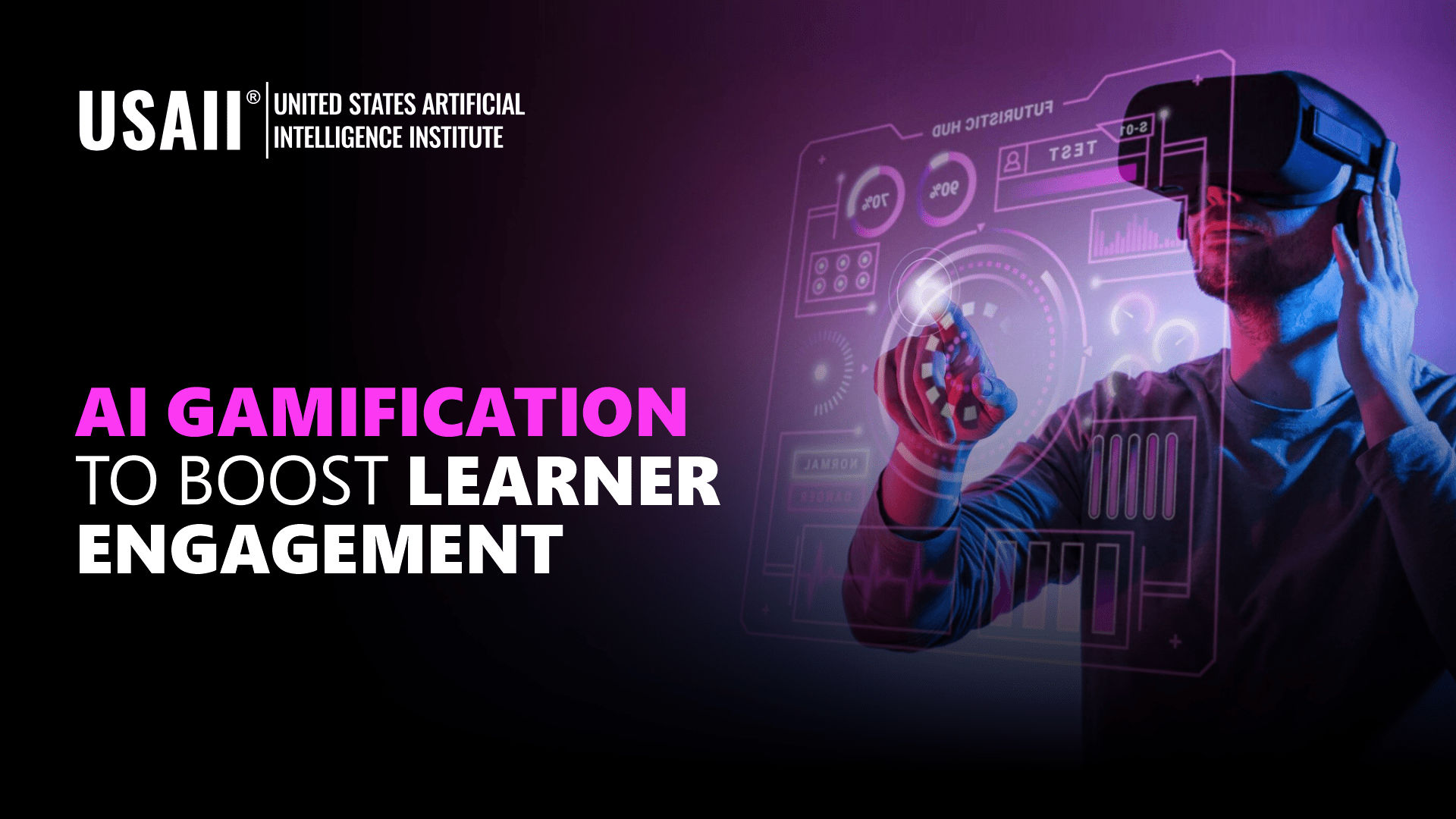
In today's fast-paced digital world, maintaining learner engagement in online learning environments is a significant challenge. Traditional instructional methods often struggle to engage learners who are used to interactive and immersive experiences in other aspects of their lives. Educators and course designers are continually seeking innovative strategies to make learning more engaging and effective.
One promising approach is the use of gamification, the application of game design elements in non-game contexts. By incorporating elements such as points, badges, leaderboards, and challenges, gamification aims to make learning more interactive and enjoyable. While traditional gamification has proven beneficial, it has limitations in personalization and adaptability.
This is where Artificial Intelligence steps in. AI-enhanced gamification leverages advanced algorithms and machine learning techniques to create a more dynamic and personalized learning experience. AI can analyze learner behavior, preferences, and progress in real time, allowing for the customization of gamified elements to meet individual needs. This level of personalization can significantly boost learner motivation, participation, and overall engagement.
In this article, I will explore the concept of AI gamification and its potential to transform online learning platforms. I will delve into the various ways AI can be integrated into gamification strategies to enhance the learner experience. And I will highlight the benefits and practical applications of AI-driven gamification.
Through this exploration, I aim to provide educators, instructional designers, and online platform developers with valuable insights into how AI gamification can improve learner engagement and lead to better learning outcomes.
What is AI Gamification?
Gamification refers to the incorporation of game design elements into non-game contexts to motivate and enhance user engagement. In the context of online learning, gamification involves the use of techniques like points, badges, leaderboards, challenges, and rewards to create a more interactive and enjoyable educational experience. These elements leverage the natural human desire for competition, achievement, and recognition, thereby making learning more engaging and motivating.
Key components of gamification include:
How AI Enhances Traditional Gamification Techniques
While traditional gamification has shown success in increasing engagement, it cannot often tailor experiences to individual learners. This is where AI comes in, adding a layer of intelligence and adaptability that enhances the effectiveness of gamification.
AI enhances traditional gamification techniques in several ways:
Personalized Learning Experiences
Real-Time Feedback and Adaptation
Intelligent Tutoring Systems
Benefits of AI Gamification for Learner Engagement
Increased Motivation and Participation
Gamified elements make learning more enjoyable and engaging. When learners see immediate rewards for their efforts, such as earning points or badges, they are more motivated to continue participating. For example, a study found that learners who used gamified learning platforms were more likely to complete their courses and participate actively in discussions and activities.
Enhanced Learning Outcomes
Gamification combined with AI not only boosts engagement but also improves knowledge retention and comprehension. For instance, learners who engage with interactive simulations and receive instant feedback from AI are more likely to understand and remember complex concepts. This leads to better performance in assessments and real-world applications of knowledge.
Continuous Engagement and Progress Tracking
AI gamification ensures that learners remain engaged throughout their educational journey. AI tracks learner progress and provides ongoing challenges that are appropriately difficult, preventing boredom and frustration. Continuous engagement is crucial for maintaining long-term learning interests and achieving educational goals.
Implementing AI Gamification in Online Training Platforms
Identifying the Right Gamification Elements
Selecting the appropriate game elements is key to successful gamification. Understand your target audience and their preferences. For instance, younger learners might respond well to colorful badges and competitive leaderboards, while adult learners might prefer achievements and practical rewards. Balance educational content with engaging game mechanics to ensure both learning and enjoyment.
Integrating AI Technologies
Several AI tools and technologies can enhance gamification. Natural Language Processing (NLP) and Generative AI can be used to create intelligent chatbots that interact with learners, while machine learning algorithms can analyze performance data to customize learning paths.
Best Practices for Effective Gamification
Challenges and Considerations
Addressing Technical Challenges
Implementing AI gamification can present technical challenges such as data integration and system compatibility. To overcome these, consider:
Ensuring Fairness and Inclusivity
Gamification should be fair and inclusive. Ensure that all learners have equal access to gamified features and that game elements do not favor certain groups. Consider diverse learner needs and provide multiple ways to achieve success.
Monitoring and Evaluation
Continuous monitoring and evaluation are essential to assess the effectiveness of AI gamification. Use analytics tools to track learner engagement and performance. Gather feedback from learners to identify areas for improvement and make necessary adjustments.
Conclusion
AI gamification holds immense potential to transform online learning by making it more engaging, personalized, and effective. By incorporating AI-driven gamified elements, educators and platform developers can create dynamic learning environments that motivate and support learners. While challenges exist, thoughtful implementation and continuous improvement can lead to significant benefits in learner engagement and learning outcomes.
As we move forward, educators and developers must explore the possibilities of AI gamification and embrace innovative strategies to enhance online education. By doing so, we can create enriching and fulfilling learning experiences that cater to the diverse needs of all learners.
Follow us: